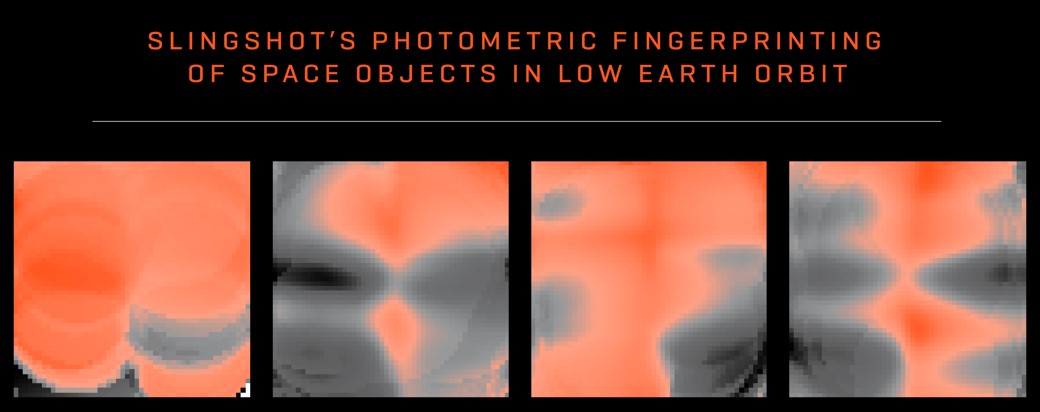
EL SEGUNDO, CA, Apr 8, 2025 – Slingshot Aerospace, Inc. has announced that it has been selected by AFWERX to support its Rapid Analysis of Photometric Tracks for space Object identification and behavior Recognition (RAPTOR) program. Under RAPTOR, Slingshot will use machine learning to track, analyze, and report on behaviors of objects in low earth orbit.
Initially, RAPTOR will be used to track and maintain custody of space objects of interest to U.S. space command, enabling on-time reporting of events that could indicate an imminent satellite maneuver or mission change.
“Protecting our national interests demands the utmost focus on maintaining dominance and situational awareness in the space domain,” said Tim Solms, CEO of Slingshot Aerospace. “The Department of Defense must achieve comprehensive visibility and intelligence on covert and adversarial activities in space. RAPTOR delivers unparalleled awareness to safeguard critical assets, strengthen mission readiness, and uphold the security of our nation and its allies.”
Vast amount of photometric data from the Slingshot global sensor network create digital signatures of space objects in LEO that Slingshot can identify, track, profile, and analyze. This photometric fingerprinting provides defense and intelligence agencies with a new set of tools to unlock applications, including:
- Tracking objects of interest: Slingshot’s systems alert defense and intelligence agencies of changes in satellite orientation and provide insights to support response decisions. For foreign launches by non-cooperative nations, RAPTOR can analyze the characteristics of newly launched satellites to identify their type and mission and determine if additional analysis is required.
- Maintaining custody of objects: When custody of an object in orbit is lost, whether by accident or deliberate obfuscation, Slingshot can use the object’s fingerprint to restore tracking. If objects are grouped, digital fingerprints help identify and separate them.
- Detecting anomalies: When objects show unexpected behavior or appear in unplanned locations, Slingshot can compare their fingerprints to those in its catalog to support identification of satellite type, function, or mission. Fingerprints of active satellites will serve as a reference to help assess new satellites with matching or similar fingerprints.
Slingshot maintains a catalog of approximately 14,500 active spacecraft and debris with its globally deployed network of optical sensors, which generate more than 4.5 million photometric observations each night. When analyzed the resulting “light curves” create a digital fingerprint for each space object that can be fed into Slingshot’s Agatha AI model to identify changes like shifts in an object’s orientation in space or its photometric signature.
“Establishing a comprehensive fingerprint database for all objects in orbit enables us to precisely identify an object’s nature and infer its potential mission objectives,” said Dr. Dylan Kesler, vice president of Data Science, Slingshot Aerospace. “By applying machine learning across our network, we can identify unexpected behavior and use those insights to support our partners’ defense missions.”
Source: Slingshot Aerospace
About Slingshot Aerospace
![]()
Slingshot Aerospace specializes in space simulation and analytics solutions to enhance situational awareness in complex environments. The company integrates data from satellites, aircraft, drones, and ground-based sensors, applying advanced analytics and machine learning to deliver clear insights. Their offerings include space object tracking, space traffic coordination, and space modeling and simulation services, serving both government and commercial sectors. Slingshot Aerospace has approximately 137 employees as of 2024. The company has secured significant funding, including a $30 million investment in September 2024. Their client portfolio features prominent organizations such as NASA, the U.S. Space Force, and various satellite operators, underscoring their role in promoting safe and sustainable space operations.
About AFWERX
![]()
AFWERX is an innovation program under the United States Air Force (USAF), established in 2017 to accelerate agile capability development and foster collaboration between the military, startups, academia, and private industry. Its mission is to solve real-world defense challenges through rapid prototyping, tech scouting, and streamlined contracting processes. AFWERX operates key initiatives like Spark, Prime, and AFVentures, which focus on areas like advanced air mobility, digital engineering, energy, and autonomous systems. It serves industries spanning aerospace, defense, cybersecurity, AI, and advanced manufacturing. AFWERX facilitates billions in federal funding through Small Business Innovation Research (SBIR) and Small Business Technology Transfer (STTR) programs. The organization is headquartered in Washington, D.C., with operational hubs in Las Vegas, Austin, and Dayton. AFWERX plays a central role in bridging the gap between innovative technologies and the U.S. Air Force’s evolving mission needs.
